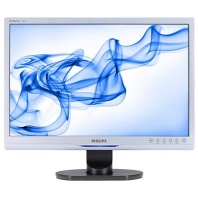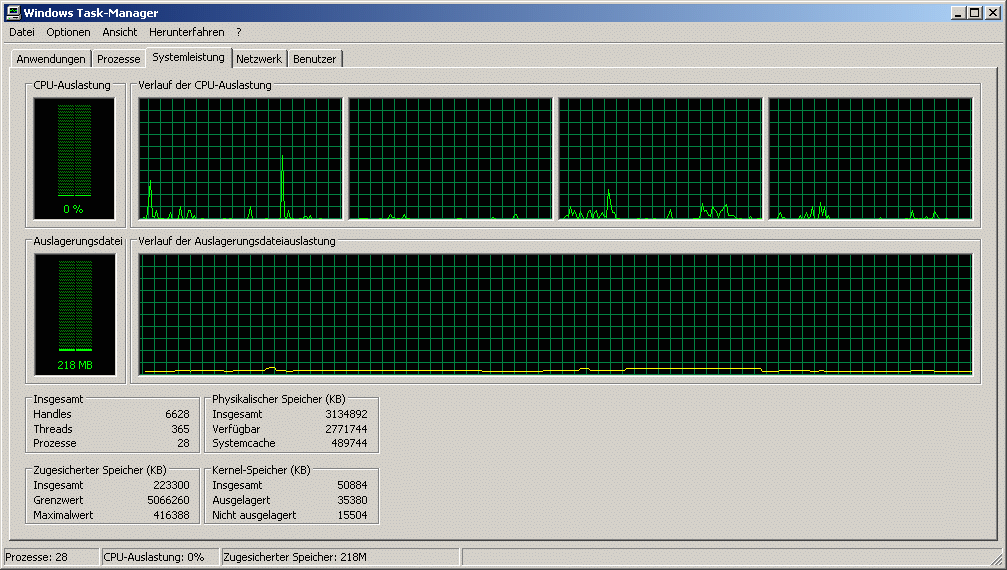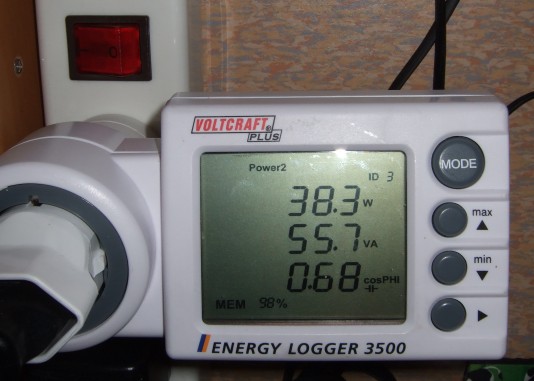The Green PC Project
by René Pawlitzek, rpawlitzek@hotmail.com
The idea
What do you do with a 10 year old PC? An
AMD Duron
with 1GHz, 1 GB RAM (PC-133), and a
20 GB harddisk. You have two possibilities: a) You throw it away and buy a brand-new PC
or b) you rebuild your old PC with a new motherboard, new memory and a new harddisk.
Luckily, the PC industry has come up with standardized components that allow you to
exchange parts easily, at least most of the time. I chose to go with b) because I was not
yet ready to throw away my reliable PS/2 Cherry keyboard, my ergonomic PS/2 Logitech mouse,
my brilliant Philips 19“ LCD
energy star
monitor with VGA connector (16.5W power consumption),
my lovely MaxData PC case with its quiet Delta power supply, the LG CD burner with IDE
interface, the Epson printer and the parallel printer cable, and the aging Windows XP Home
operating system that I have used and appreciated for so long. My plan was to
reuse all
these components in order to avoid waste and at the same time build a new system with low
power consumption. In other words, I decided to build the ultimate Green PC, powerful enough
to do daily work and energy efficient using some parts from my old PC.
 |
+ |
 |
| Philips 190SW monitor |
|
MaxData PC case |
The challenge
The challenge was to find a new power saving motherboard that could connect to all the
legacy components. I did find such a board on the market: the Gigabyte GA-D525TUD. This
motherboard comes with an
Intel Atom D525
dual-core processor. A CPU that is fast enough
to surf the web, to create Microsoft Office documents, to watch YouTube movies, to listen
to music, to look at photos, to read and write e-mails, and to chat over the internet.
The processor has a max.
TPD
of 13W, 2 cores and
hyperthreading.
Unlike many other motherboards,
the GA-D525TUD features a number of legacy interfaces to use older hardware. It has an IDE
interface to connect PATA disks and CD/DVD burners, PS/2 connectors for mouse and keyboard,
a VGA output to connect an LCD monitor without DVI or HDMI interface, a parallel printer
port to connect older printers without USB port, a PCI slot and surprise, surprise a serial
port to connect ancient 56k modems. An excellent fit for my project! In addition to all
these legacy interfaces (PS/2, VGA, IDE, PCI, parallel and serial port), the GA-D525TUD
includes 8 USB 2.0 ports, a Gigabit LAN port, and 4 SATA ports. The board also supports
RAID 0, 1 and is therefore suitable for building a NAS (Network Attached Storage) device.
Gigabyte is known for its reliable motherboards and the GA-D525TUD is without any doubts a
high quality product. It contains a DualBIOS and apparently implements Gigabyte's Ultra
Durable 3 technology for a long lifetime. The board includes the Intel Atom D525 processor
and sells for CHF 104.00 here in Switzerland. In addition to the board, I bought 2 x 2GB
DDR3-800 ValueRAM from Kingston for CHF 45.00 and a Western Digital WD5000AADS 500GB
'green line' disk. The disk is very quiet (21dBA idle, 22dBA seek), very power efficient
(4.13W read/write, 2.18W idle, 0.77W standby, 0.75W sleep), and costs
CHF 45.00. A good match for the Gigabyte motherboard.

 Gigabyte GA-D525TUD motherboard
Gigabyte GA-D525TUD motherboard
The hardware assembly
My biggest fear was that the new GA-D525TUD motherboard would not fit into the MaxData PC
case. Before placing the order for the board, I checked on the internet if the board's
Mini-ITX format (17 x 17 cm) was
compatible with the
ATX standard. Luckily, ATX and
Mini-ITX are compatible. All the holes for mounting the board are in the right places and
putting the board into the old MaxData case was an easy task. Next, I connected the IDE
cable to the CD burner, the two power connectors, and the USB cable to the front of the
case. The front panel connector for power, reset, power LED, and harddisk LED had to be
rewired because it was connected to the MSI-6340 motherboard using a layout which is not
Intel compatible. This required some work and was the biggest obstacle when assembling
the hardware. Connecting the harddisk required a power adapter, because SATA
disks no longer draw power using a 4-pin Molex connector. Such an adapter is CHF 9.30 here
in Switzerland. I was surprised how easily I was able to replace the old motherboard and
harddisk with the new components thanks to the PC industry's standardization efforts.
 Gigabyte GA-D525TUD and Western Digital WD5000AADS in a MaxData PC case with space for rent
Gigabyte GA-D525TUD and Western Digital WD5000AADS in a MaxData PC case with space for rent
The software installation
I decided to reuse my old Windows XP Home operating system well knowing that this software
is about to be phased out in the near future. However, I still like Windows XP despite
being a Windows 7 user for a quite some time now. But why should I throw out something that
still works perfectly? The installation of Windows XP Home and the GA-D525TUD device drivers
was painless. The system recognizes 2.99 GB of RAM, and the 4 execution units of the Intel
Atom D525 CPU (see below). I had no issues with the software that I have used on the old PC.
Everything still runs, only faster. This is what PC compatibility is all about!
 Dual-core and hyperthreading
Dual-core and hyperthreading
The conclusion
I am more than happy with my new Green PC. It could be called the ultimate Green PC,
because it was build with reused components from my old PC and it also contains a new
state-of-the-art motherboard / CPU combo which is quiet and energy efficient. Now let's
have a closer look at different aspects of the system:
-
HD: Harddisk space went up by a factor of 25, from 20GB to 500GB. A huge improvement.
-
RAM: The new system is able to use 3GB of RAM. The old system had 1 GB of RAM.
Improvement by a factor of 3.
-
Speed: The new setup has now a dual-core CPU with 1.8GHz, hyperthreading, 800 Mhz
RAM (DDR3), and a much faster disk. Needless to say, that you can feel the difference.
According to Passmark.com the Intel Atom CPU is roughly 3 times faster than the old
AMD Duron 1GHz processor.
-
Noise: The Atom CPU doesn't generate a lot of heat thanks to its max. TPD of 13W and
the motherboard's fan can work very quietly. Also a big improvement.
-
Power consumption: The new system requires 38.3W when idle and roughly 43.5 W when
running with load. I had hoped that the power consumption would be even a bit lower,
but I assume that the old, reused power supply has only an efficiency of 70% preventing
a lower value. The old PC used 65W when idling and typically 80-120W
when doing work. Improvement by a factor of 2. The power consumption of my complete
PC system is now: 65W = 40W (PC) + 16.5W (LCD) + 5W (ADSL Modem) + 3.5W (USB Hub)
-
Cost: The new components cost CHF 203.30 in total. A comparable, brand-new system is
around CHF 500. Cost saving by factor of 2.5.
-
Fun: Endless! It was so much fun to evaluate, order, build, setup and measure the
system. It is even more fun to use a unique system that you build yourself. And
finally, it makes you feel good to know that you have reduced waste by reusing
components and that you save energy whenever you use your PC.
 The Green PC uses roughly 40 watts.
The Green PC uses roughly 40 watts.








